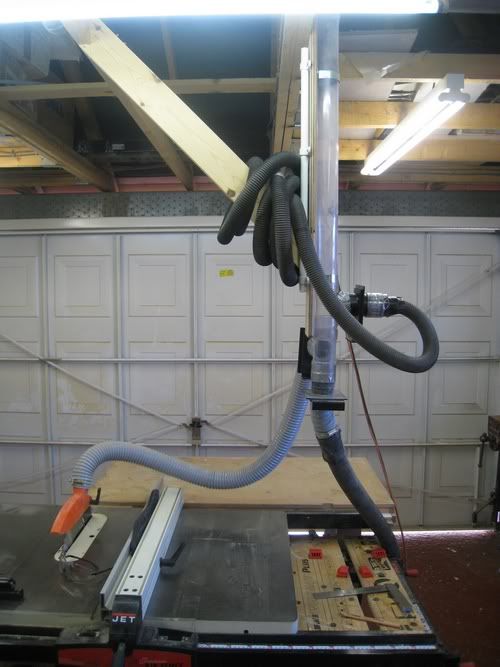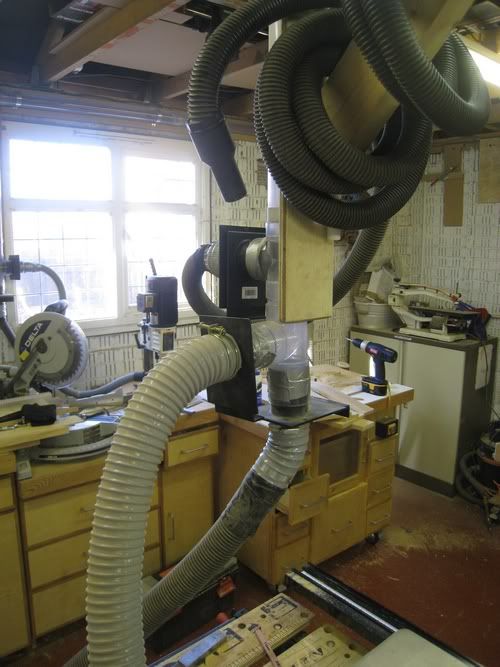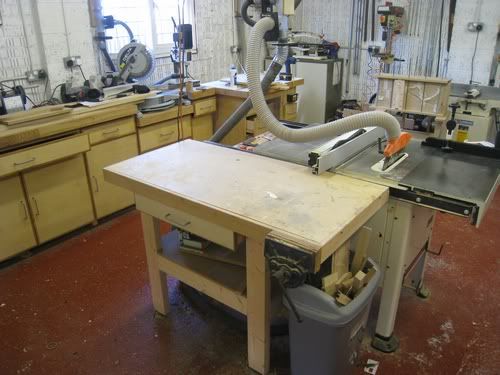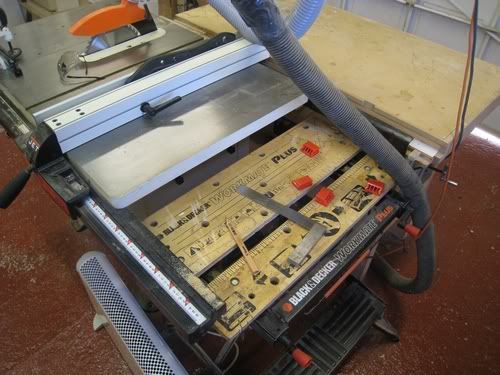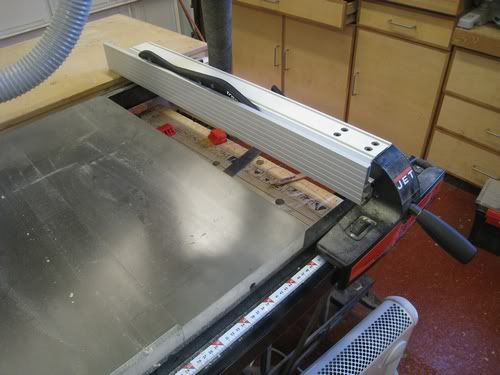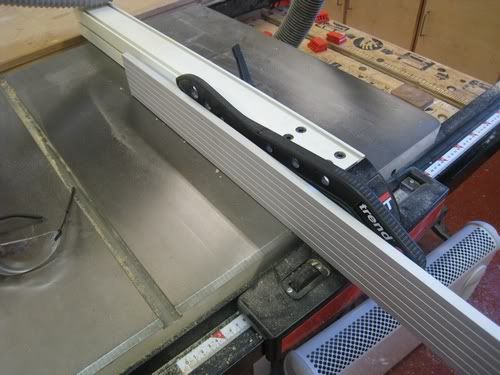Wizer
If you do make an outfeed table, and if you do use the torsion-box principle I show in my DVD, can I make a couple of suggestions for improvements?
When I made mine, I was only interested in the outfeed aspect of it. I used the saw almost exclusively for ripping and small sheet work, preferring to use my SCMS for cross-cutting.
But more recently I've been using a crosscut sled, particularly for tenon shoulders, and that, as well as one or two other jigs, relies on a bar to run in the mitre slot. The outfeed table limits its forward travel, so I've routed a couple of channels in the outfeed table to accommodate this. Unfortunately that means routing right through the top skin. I've ended up routing a wider and deeper channel, gluing in a solid piece, then routing that for the channel I need. It doesn't really look very neat,to be honest.
If I were to make it again, I'd put solid pieces inside the torsion box where the channels are going to be and fill the rest with the eggbox supports. Then when it is all skinned with Formica, just rout the channels right into the solid strips. It would be much neater.
To rout them, you can either fit very long fence rods with a fence at each end (the one that comes with the router plus an auxiliary one like I use on my mortising jig) or make a long dado jig like in BW a few issues ago.
The channels do not have to be precise in size, they just have to be big enough so that the bar under the mitre gauge or jig travels clearly, without interference from the outfeed table slots.
I envy anyone who has the space to make a fixed outfeed table!

HTH
Steve

































